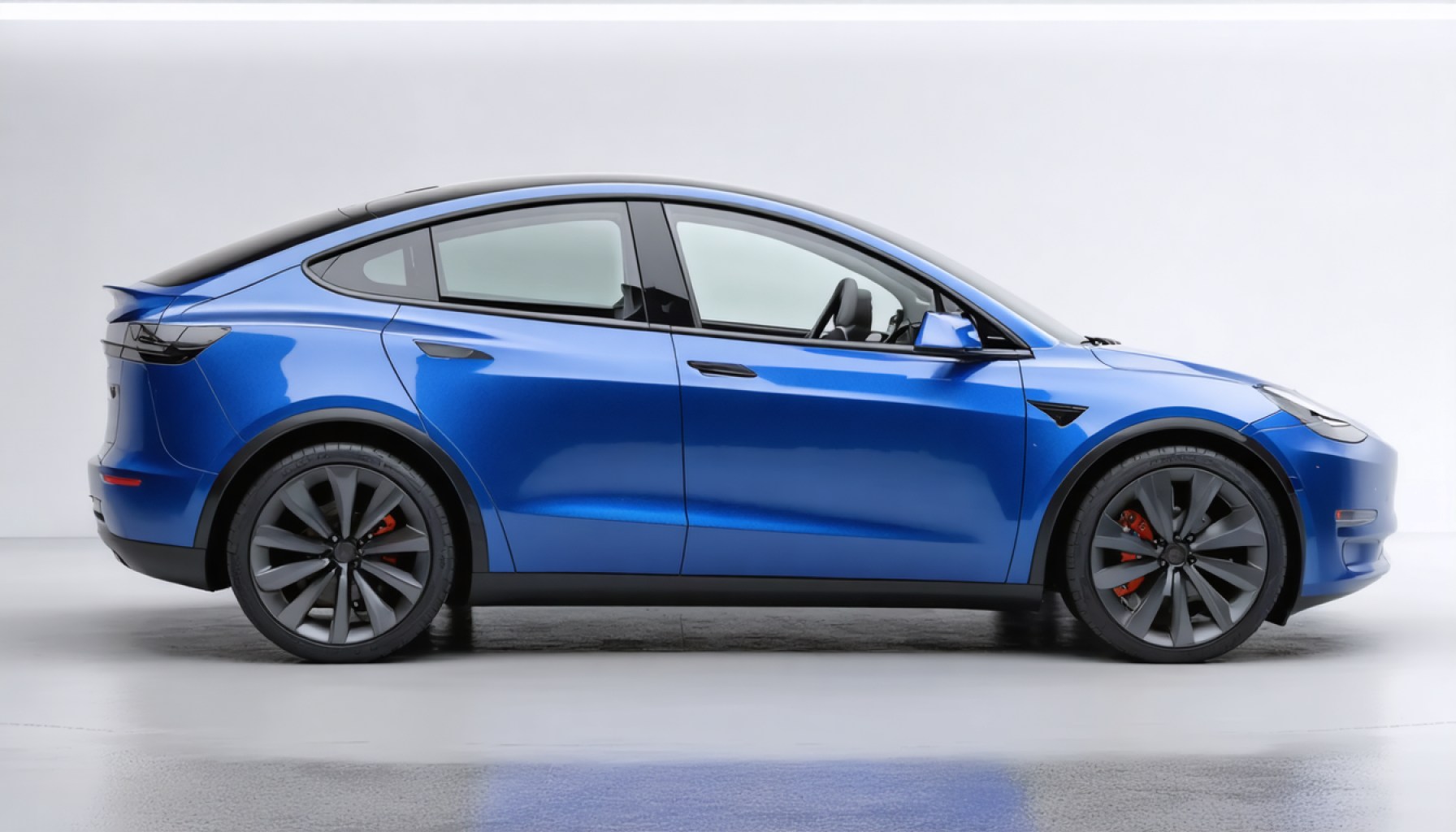- Tesla faces significant challenges in the European market in 2025, with declining sales in key countries like France, the Netherlands, Sweden, and Austria.
- The new Model Y is pivotal to Tesla’s attempt to revitalize its presence, though its delayed rollout has tested consumer patience.
- Portugal shows a slight sales increase, indicating potential consumer interest in the revamped Model Y.
- Competition from other electric vehicle brands and market dynamics are contributing to Tesla’s struggles.
- Strategies from the Chinese market, such as sales incentives, might offer solutions to the European challenges.
- The looming question remains whether the updated Model Y can restore Tesla’s market position or if it will continue to face dwindling influence.
- The company’s future in Europe is uncertain, reliant on adaptability and innovation amidst unpredictable market volatility.
Navigating through a turbulent European market, Tesla finds itself at a pivotal crossroads in 2025. As the electric vehicle titan juggles declining sales and emerging competition, the all-new Model Y takes center stage, representing both a beacon of hope and a stark reality check.
The narrative unfolds with stark numbers from major European nations, painting a picture of struggle for the brand once synonymous with the electric revolution. France saw deliveries plummet by 37% in March compared to the previous year, while the Netherlands experienced a staggering 61% decline. Sweden and Austria reported 64% and 34% drops, respectively, signaling a waning allure of the brand’s offerings amidst electric competitors. Even in Norway, Tesla’s once-stronghold, sales dipped by 1%.
Despite the grim statistics, a glimmer of potential hope lies in Portugal, where Tesla managed a slight uptick of 2% in March, hinting that the new Model Y could gradually sway consumer sentiment. However, the overarching landscape remains fraught with challenges, where the triad of brand damage, delayed deliveries of the Model Y’s variants, and fierce marketplace rivalry create a complex web difficult to unravel in the short term.
The launch of the revamped Model Y, set with bells and whistles to captivate environmentally conscious consumers, aims to reinvigorate its European trajectory. Yet, the delay in rolling out the rear-wheel-drive version across the continent has tested consumer patience and company strategy alike. Meanwhile, on the other side of the globe, Tesla’s China arm has already introduced incentives to spur Model Y sales, suggesting lessons that could be applied to the European conundrum.
Such turbulence begs the question: Can an updated Model Y truly shift the European market’s perception and reinstate Tesla’s position at the electric vehicle apex? The awaited rear-wheel-drive model might boost accessibility, but time will tell if it can also counter the lingering brand erosion.
As Tesla maneuver through these rocky waters, the outlook remains cautiously optimistic but tethered to unpredictability. Stakeholders await Q2 with bated breath, longing for signs of recovery. Until then, anticipation builds around whether the Model Y’s magic can be revived, or whether Tesla will continue to grapple with a dwindling European presence.
In Europe’s rapidly evolving auto landscape, Tesla’s story is a vivid reminder that past glories offer no guarantees against future volatility. Here, adaptability and innovation stand as the vanguards, charting a course towards renewed success—or further adversity.
Is Tesla at the Crossroads? Analyzing the Impact of the New Model Y on the European Market
Understanding the Current European Market Scenario for Tesla
As Tesla grapples with declining sales and stiff competition across Europe, the release of the new Model Y is a strategic attempt to regain traction. The European electric vehicle (EV) market is experiencing rapid transformation, with increasing local competition from companies like Volkswagen, BMW, and Renault, who are rapidly expanding their EV offerings.
Key Questions and Answers
1. What are the chief reasons behind Tesla’s sales decline in Europe?
Several factors contribute to the sales slump:
– Intense Competition: European automakers are rolling out competitive EV models.
– Brand Perception: Missteps in service and delivery can harm brand perception.
– Economic Conditions: Fluctuating economic conditions and regulatory changes impact consumer buying power.
2. How is the Model Y positioned to tackle these challenges?
The Model Y is designed with features aimed at environmental consciousness.
– Improved Range and Efficiency: Expected to appeal to eco-conscious buyers.
– Technological Upgrades: Advanced automation and driving aids might attract tech-savvy consumers.
3. Market Forecasts & Industry Trends for Tesla in Europe
– 2025 and Beyond: While short-term challenges exist, a broader acceptance of EVs in Europe, coupled with supportive government policies, could provide a favorable tailwind.
– Industry Trend: The focus is shifting towards sustainable and autonomous driving solutions that Tesla excels in.
4. Are there any controversies or limitations with the new Model Y?
Delays in the deployment of new models lead to consumer dissatisfaction. For instance:
– Delivery Delays: The rollout of the rear-wheel-drive version has been slow, undermining consumer goodwill.
– Price Sensitivity: As competitors introduce budget-friendly options, Tesla may need to reconsider its pricing strategy.
5. Real-World Use Cases and Compatibility
– Urban Mobility: The Model Y is well-suited for urban environments, known for its compact yet spacious design.
– Technology Integration: Seamlessly integrates with Tesla’s network, providing over-the-air updates and advanced navigation.
Actionable Steps for Tesla and Investors
– Adapt Pricing Strategies: Consider regional pricing diversity to match consumer expectations and competitor offerings.
– Enhance Customer Support: Improve delivery times and service networks to boost brand loyalty.
– Marketing Focus: Emphasize the unique selling points of the Model Y, such as its environmental benefits and technological advancements.
Pros & Cons Overview
– Pros: Cutting-edge technology, superior range, robust brand equity.
– Cons: Higher pricing, competition with well-established European automakers.
For a deeper dive into technological advancements, Tesla’s strategies, and innovation insights, visit the official Tesla website.
Improving Brand Image: Quick Tips
– Engage Local Markets: Collaborate with local dealerships and service providers to enhance consumer relationships.
– Sustainability Focus: Amplify sustainability initiatives to resonate with European environmental goals.
As Tesla navigates the rocks and shoals of the European market, adaptability and innovation are key. While the situation presents challenges, there are ample opportunities for Tesla to reshape its European trajectory positively.

















